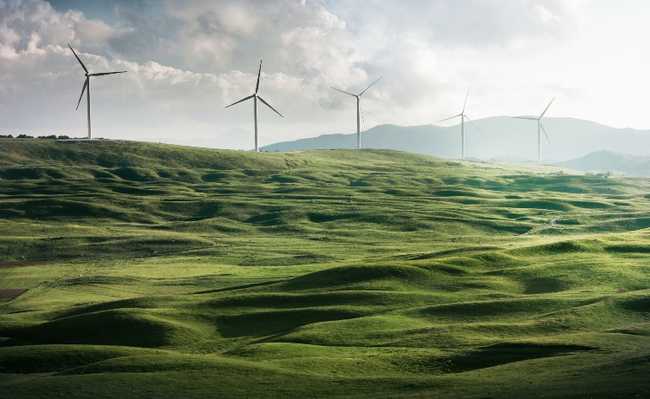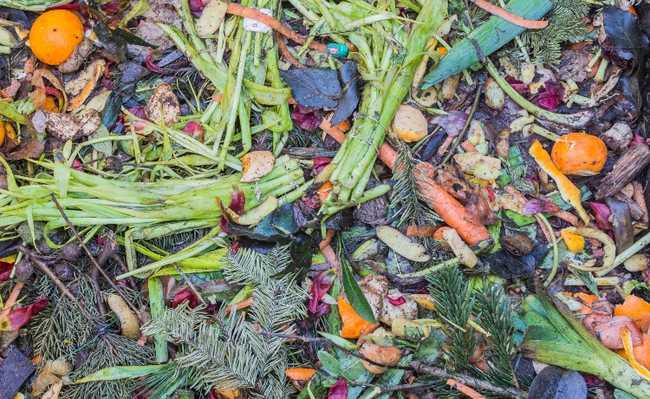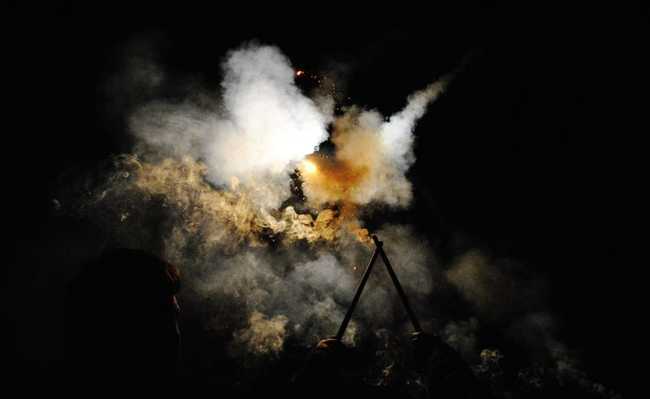What is wind energy?
Understand the advantages and disadvantages of wind energy in Brazil

Appolinary Kalashnikova image on Unsplash
Wind energy is energy produced from the kinetic energy of the wind (moving air masses) and the electromagnetic heating of the sun (solar energy), which together move the pickup blades.
The kinetic energy of wind is usually converted into mechanical energy by windmills and pinwheels, or into electrical energy by wind turbines (or wind turbines).
The application of wind energy in mechanical works by windmills and pinwheels, such as the grinding of grains and the pumping of water, dates back to the origin of the use of this energy source by humanity, which only came to be considered an alternative for energy generation from the oil crisis in the 70s.
How Wind Energy Works
The kinetic energy of wind is produced when heating layers of air create varying pressure gradients in the air masses.
The wind turbine transforms this kinetic energy into mechanical energy through the rotating movement of blades and, through a generator, there is generation of electrical energy.
The wind turbine is composed of:
- Anemometer: measures the intensity and speed of the wind. It works on average every ten minutes;
- Windsock (direction sensor): senses the wind direction. The wind direction should always be perpendicular to the tower for maximum use;
- Blades: capture the wind, converting its power to the center of the rotor;
- Generator: item that converts the shaft's mechanical energy into electrical energy;
- Control mechanisms: adaptation of the rated power to the wind speed that occurs most frequently during a given period;
- Multiplication box (transmission): responsible for transmitting the mechanical energy from the rotor shaft to the generator shaft;
- Rotor: set that is connected to a shaft that transmits the rotation of the blades to the generator;
- Nacele: compartment installed at the top of the tower, comprising: gearbox, brakes, clutch, bearings, electronic control and hydraulic system;
- Tower: element that supports the rotor and nacelle at the appropriate height for operation. The tower is a costly item for the system.
Advantages and Disadvantages of Wind Energy
The main advantage of wind energy is that it is a renewable and "clean" energy source, as it does not emit the greenhouse gases that contribute to global warming, and it does not produce waste when generating electricity.
- What are greenhouse gases
In addition, the source of wind energy is considered inexhaustible and there are no costs associated with obtaining a raw material, unlike what also occurs with fossil fuels.
Deployment costs are relatively low. The need for maintenance is low and new employment opportunities are created in areas that normally receive little investment.
A very common criticism of wind energy is related to its intermittency. Wind energy depends on the occurrence of wind at ideal density and speed, and these parameters undergo annual and seasonal variations.
Therefore, for wind energy to be considered usable from a technical point of view, the wind power plant (or wind farm) must be deployed in a location where the density of the air mass is greater than or equal to 500 watts per square meter (W/ m²) at a height of 50 meters, and the wind speed is seven to eight meters per second (m/s).
However, the construction of a wind farm cannot be based solely on meeting technical factors related to the availability of winds. The procedure also requires the carrying out of Environmental Impact Studies (EIA) and the Environmental Impact Report (RIMA), which serve to define the best location not only from a strategic point of view, but also in social and environmental terms.
Wind farms (or wind farms) are spaces in which there are at least five wind turbines (aerogenerators) that can produce electricity. This concentration of wind turbines in the same location causes a series of negative externalities.
One of the negative environmental impacts is on bird populations. When flying too close to the turbines, many birds are hit by the blades and suffer serious injuries and even die. The implementation of wind farms can influence changes in the routes of migratory flows of bird populations.
Furthermore, wind farms can also negatively impact the local ecosystem and surrounding human populations due to the high noise that the turbines produce when operating. Noise pollution is considered a public health problem, as it is associated with increased stress, aggressiveness and psychological disorders, among other impacts on health. Noise can also cause animal populations to move away, affecting the local ecosystem.
The surrounding community can be affected by visual pollution. The construction of wind farms causes significant changes in the landscape.
Another impact related to turbines is the interference they cause in meteorological radars. These radars are used to predict the volume of rain, risk of hail and other weather actions. To be able to perform such activities, they must be very sensitive equipment. This sensitivity makes them susceptible to outside interference. A single wind turbine operating in an area close to a weather radar can affect your forecasts. As radars are important tools in the prevention of critical events in rainy periods, and used by Civil Defense to base emergency measures, minimum distances were established that must be met between radars and wind turbines.
According to the Ministry of Science, Technology and Innovation report, no wind turbine should be installed at a distance of less than 5 km from C-band radar (frequency between 4 GHz and 8 GHz) and 10 km of S-band (frequency between 2 GHz and 4 GHz). When dealing with the implementation of wind farms, the distances to be considered are 20 km and 30 km for each type of radar, respectively.
Although wind energy does not produce waste during electricity generation, it should be noted that there is waste from the manufacturing process of turbine blades, which are usually made with fiberglass. Fiberglass itself is not toxic, however, additives that are used to reinforce the material can be such as epoxy resin. Epoxy resin is made from harmful materials like bisphenols.
- Know the types of bisphenol and their risks
A shovel has an average lifespan equivalent to 20 years and there is still no technology that makes recycling shovels economically viable due to the high complexity of the material from which it is made.
Applicability of wind energy
According to the report by the National Electric Energy Agency (Aneel), only 13% of the world's land surface is suitable for this factor, which already imposes a limit on its applicability in most regions.
wind energy in Brazil
In the case of Brazil, more than 71 thousand km² of the national territory have a wind speed above 7 m/s at a height of 50 m. This potential would provide the country with the equivalent of 272 terawatt-hour per year (TWh/year), which represents approximately 64% of the national consumption of electricity, which is around 424 TW/year. This potential is mainly concentrated in the northeast region of the country, followed by the southern region, as can be seen in the Atlas of Brazilian Wind Potential.
Wind energy is an alternative to diversify the country's electricity matrix and thus increase security in this sector. It is interesting that, given the increased demand for electricity, the country remains on the path of clean technologies instead of opting for non-renewable sources, which cause even more aggressive social and environmental impacts.
An alternative to the impacts of noise and visual pollution is the installation of wind farms offshore, ie at sea. Furthermore, technological advances can be made in order to minimize other impacts, such as the development of turbines that are less harmful to birds.










